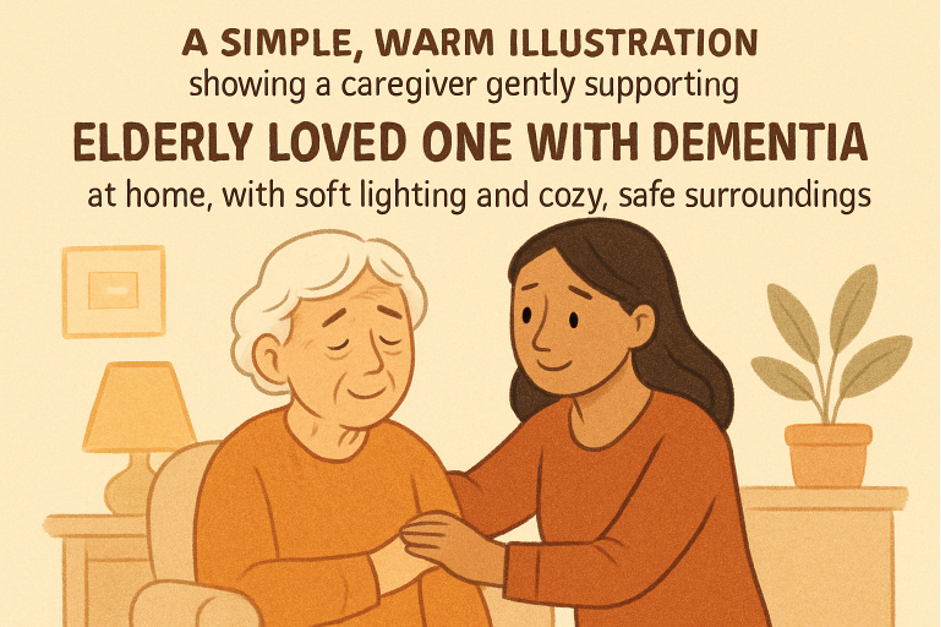Introduction
Caring for a loved one with dementia is a profound responsibility that involves compassion, patience, and constant learning. While each family’s experience is unique, finding sustainable solutions can ease the journey and strengthen the support given at home. One helpful resource available to those seeking professional assistance in New York is the Southampton dementia care program, which offers personalized options to meet individual and family needs.
As dementia progresses, the right strategies and available resources allow families to navigate changes more confidently, creating a nurturing environment that empowers both caregivers and those with dementia. By utilizing trusted care services, such as those provided through Southampton dementia care, and implementing simple modifications at home, families can proactively address many challenges.
Creating a Safe Home Environment
Home can and should be a place of security and comfort for individuals with dementia. Adjustments to lighting, furniture placement, and daily home operations can significantly prevent injuries and reduce anxiety. Increasing natural or artificial lighting helps reduce falls and confusion while removing tripping hazards, such as throwing rugs and clutter, and keeps walkways clear and safe. Installing grab bars in key areas, securing sharp or hazardous items, and using childproof locks on cabinets further ensure safety. These modifications are foundational steps in providing peace of mind for the entire household.
Establishing a Consistent Daily Routine
Predictability is a key ally against disorientation and distress for those living with dementia. Establishing regular times for meals, bathing, and sleep supports cognitive function by anchoring the day with familiar routines. Simple visual cues, such as labeled storage areas or large-print calendars, help reinforce these routines, giving individuals a sense of autonomy. Incorporating familiar and enjoyable activities—like listening to favorite music, gentle stretches, or time outdoors—creates moments of joy and connection, strengthening daily structure.
Building consistency doesn’t mean rigidly adhering to a strict schedule but following gentle, reassuring patterns. This can include rituals and preferences meaningful to your loved one, creating positive associations and emotional safety in everyday life. For additional tips on creating dementia-friendly routines, consult resources from organizations such as the Alzheimer’s Association.

Effective Communication Strategies
With dementia, communication challenges can intensify over time, making everyday interactions potentially frustrating for both caregivers and loved ones. It’s beneficial to use simple phrases and short sentences, as well as patience and attentive listening to foster understanding. Maintaining eye contact, speaking clearly, and waiting for responses are essential. For those moments when verbal communication stalls, gentle touch, reassuring smiles, or non-verbal gestures often communicate warmth and support more effectively than words.
Adapting to Changing Abilities
As the condition progresses, try not to correct or argue if your loved one becomes confused. Redirecting the conversation or acknowledging their feelings can de-escalate frustration. Consider using memory aids or storyboards that illustrate daily tasks in sequence, which offer reminders while preserving dignity and independence. Reinforce success and celebrate small victories, focusing on connection rather than perfection.
Managing Difficult Behaviors
Agitation, aggression, and wandering are some of the most common—and often most distressing—behaviors associated with dementia. The first step in managing these requires understanding potential triggers. Emotional, physical, or environmental needs left unmet, such as pain, hunger, discomfort, or overstimulation, often underlie challenging behaviors. Addressing these needs promptly and gently redirecting attention to calming or familiar activities can help diffuse tension.
Dealing with Wandering and Agitation
Creating a soothing atmosphere by minimizing excess noise and maintaining familiar surroundings can prevent distress. It’s also helpful to introduce activities that provide purpose and focus. Family photos, soft music, or hobbies from earlier stages of life can offer grounding and reassurance. Connect with healthcare professionals who can recommend personalized strategies for persistent behavioral challenges.
Leveraging Technology in Dementia Care
Technology is transforming dementia caregiving, providing tools that protect safety, enhance independence, and reduce stress. Wearable GPS devices allow caregivers to monitor the location of loved ones who may be prone to wandering and receive instant alerts if they leave a designated safe area. Smart home systems automate reminders for medication, hydration, or essential appointments, reducing missed care risks and improving peace of mind. Communication apps create bridges between family members, enabling quick, supportive check-ins even across long distances.
Innovations in innovative technology, including voice-assisted devices and interactive tablets, are also increasingly used for cognitive stimulation, engaging individuals with games, puzzles, or personalized playlists. A growing body of research is highlighting the positive impact of these technologies on daily living and emotional well-being.
Supporting Caregiver Wellness
Caring for someone with dementia is emotionally and physically demanding. Regular breaks, consistent self-care, and support from family or community groups are crucial to preventing burnout. Carve out time for exercise, hobbies, or relaxation to restore your resilience. Don’t hesitate to seek help or counseling if you feel overwhelmed—connecting with others in similar situations offers validation and empathy.
National organizations and local support groups provide valuable resources for caregivers, helping to navigate financial, legal, and emotional issues. Information about wider support systems and respite care can be found through respected organizations like the Family Caregiver Alliance.
Planning for Future Needs
Early, clear conversations about healthcare, finances, and legal matters ensure everyone’s wishes are respected as needs evolve. Setting up power of attorney and medical directives and discussing long-term care options—including professional in-home services or memory care facilities—removes uncertainty and helps families stay prepared for the next steps. Keep up to date on the progression of dementia to recognize when additional services may be needed, and research local resources and support services that can offer specialized care.
By taking proactive steps and fostering open communication, families can build a compassionate, effective care plan that honors the practical and emotional needs of everyone involved.
Lynn Martelli is an editor at Readability. She received her MFA in Creative Writing from Antioch University and has worked as an editor for over 10 years. Lynn has edited a wide variety of books, including fiction, non-fiction, memoirs, and more. In her free time, Lynn enjoys reading, writing, and spending time with her family and friends.















